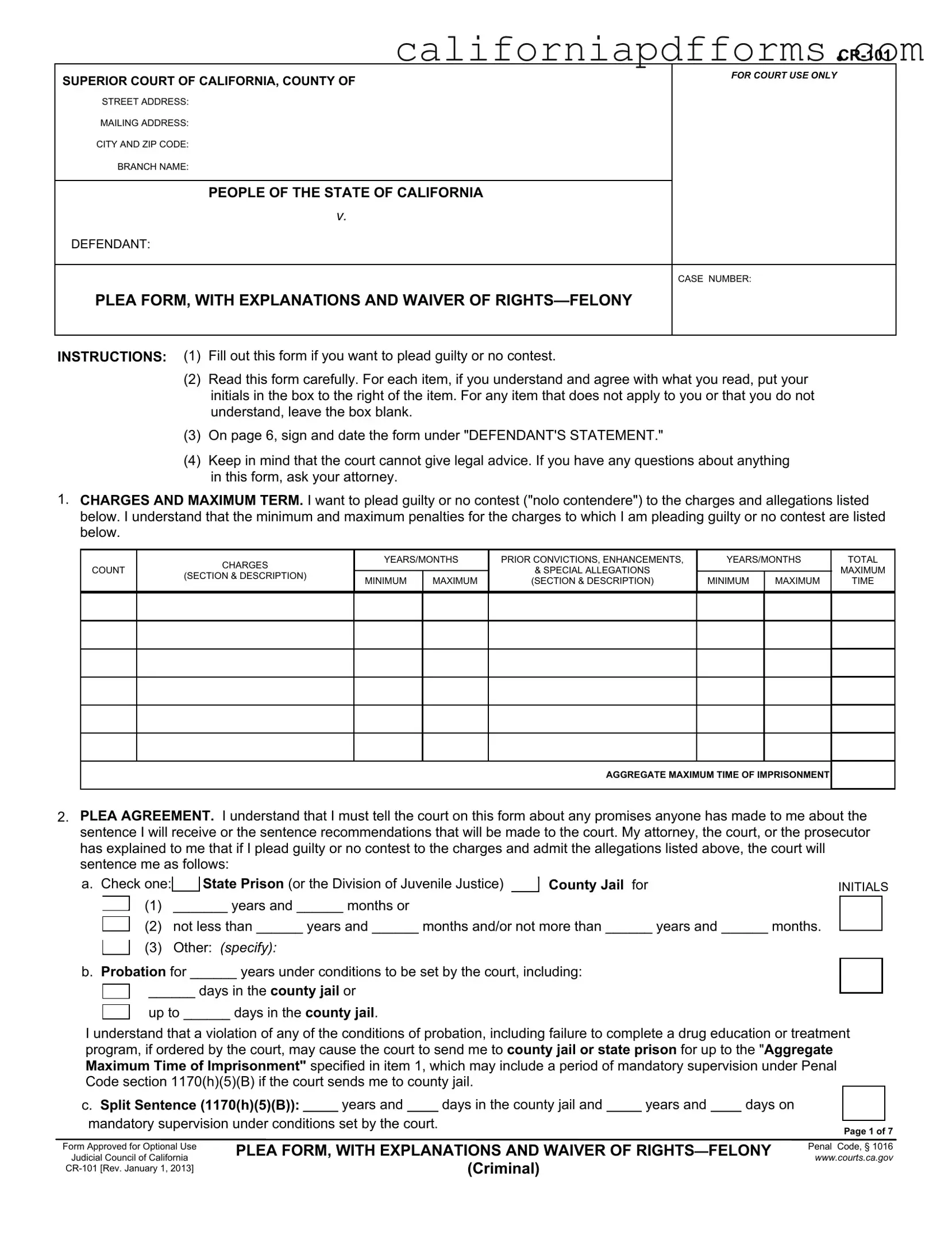Download Cr 101 California Form
The CR-101 form is a legal document used in California's Superior Court that allows a defendant to officially plead guilty or no contest to felony charges. This form includes important instructions, details about the charges, and the consequences of the plea, ensuring that defendants are fully informed before making a decision. Understanding this form is crucial for anyone facing felony charges, so take the next step by filling it out—click the button below.
Open Your Form Online
